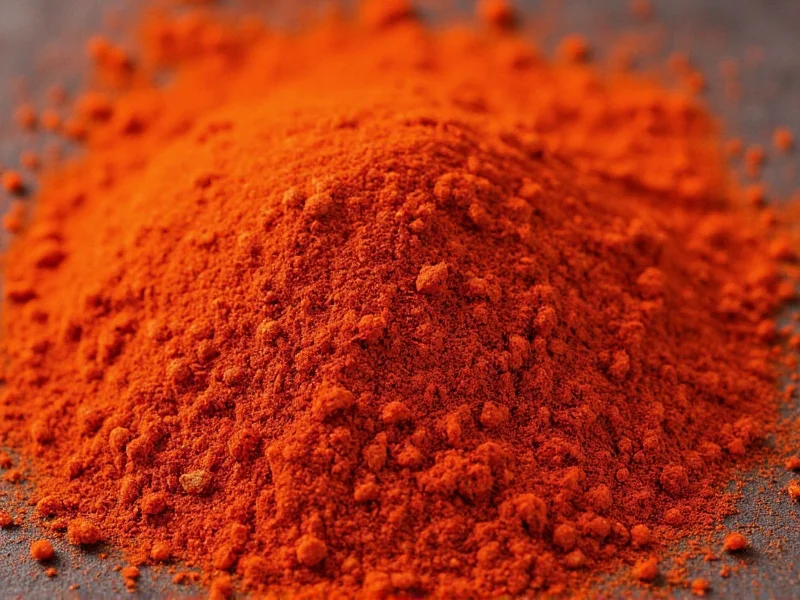Many home cooks confuse cayenne pepper and paprika because both appear as vibrant red powders in the spice aisle. However, substituting one for the other without understanding their distinct characteristics can dramatically alter a dish's flavor profile and heat level. Let's explore the key differences between these two essential spices.
Understanding Cayenne Pepper
Cayenne pepper comes from Capsicum annuum varieties specifically bred for heat. Named after the city of Cayenne in French Guiana, this spice delivers consistent, pronounced heat measuring between 30,000-50,000 Scoville Heat Units (SHU). The flavor is sharp, pungent, and distinctly peppery with minimal sweetness.
Chefs use cayenne when they want to add significant heat without substantially changing a dish's color. It's commonly found in:
- Hot sauces and chili blends
- Cajun and Creole seasoning mixes
- Marinades for meats
- Some curry powders
- Bloody Mary cocktails
Exploring Paprika Varieties
Unlike cayenne, paprika encompasses multiple varieties with dramatically different flavor profiles. Made from ground sweet or chili peppers, paprika ranges from vibrant red to deep orange depending on the pepper variety used. The key paprika types include:
| Type of Paprika | Heat Level (SHU) | Flavor Profile | Common Uses |
|---|---|---|---|
| Sweet Paprika | 0-500 | Earthy, sweet, slightly fruity | Garnishing, deviled eggs, Hungarian goulash |
| Smoked Paprika | 0-2,500 | Woodsy, smoky, complex | Paella, roasted vegetables, barbecue rubs |
| Hot Paprika | 5,000-15,000 | Spicy with underlying sweetness | Chili con carne, spicy stews, chorizo |
Key Differences Between Cayenne and Paprika
The most critical difference between cayenne pepper and paprika lies in their heat consistency and flavor complexity:
- Heat level: Cayenne consistently delivers high heat (30,000-50,000 SHU), while paprika ranges from completely mild to moderately spicy
- Flavor profile: Cayenne offers straightforward heat with minimal complexity, whereas paprika provides earthy, sweet, or smoky notes depending on variety
- Color impact: Both add red color, but paprika generally provides more vibrant hue without overwhelming heat
- Culinary function: Cayenne primarily adds heat; paprika contributes both color and nuanced flavor
Can You Substitute One for the Other?
Understanding whether you can substitute paprika for cayenne (or vice versa) depends on your recipe's requirements:
When substituting paprika for cayenne, remember you'll lose significant heat. For every ¼ teaspoon of cayenne, you'd need 1-2 teaspoons of hot paprika to approach similar heat levels, but the flavor profile will differ substantially. Sweet paprika makes a poor substitute for cayenne in recipes requiring noticeable heat.
Conversely, substituting cayenne for paprika requires extreme caution. Just ⅛ teaspoon of cayenne can replace 1 teaspoon of hot paprika, but sweet paprika substitutions with cayenne will make dishes unpalatably hot. Never substitute cayenne for smoked or sweet paprika unless you want to transform your dish's character completely.
Common Misconceptions Clarified
Several myths persist about these spices that lead to cooking mistakes:
- Myth: All red pepper powders are interchangeable Fact: Heat levels vary dramatically between cayenne, paprika, and other red spices like chili powder
- Myth: Paprika is just mild cayenne Fact: They come from different pepper varieties with distinct flavor compounds
- Myth: Hungarian paprika and Spanish paprika are identical Fact: Hungarian varieties tend to be sweeter while Spanish often features smokiness from drying process
Proper Storage for Maximum Freshness
Both spices lose potency over time but require similar storage conditions:
- Store in airtight containers away from light and heat
- Keep in a cool, dark cupboard (not above the stove)
- Replace every 6-12 months for optimal flavor (they don't spoil but lose potency)
- Consider refrigerating in humid climates to prevent clumping
When spices lose freshness, you'll notice faded color and diminished aroma. Properly stored, cayenne maintains heat longer than paprika retains its nuanced flavors.
When to Choose Each Spice
Selecting between cayenne pepper and paprika depends on your recipe's requirements:
- Use cayenne when you need consistent, pronounced heat without dramatically altering color
- Choose sweet paprika for color enhancement and mild earthy flavor (deviled eggs, potato salad)
- Opt for smoked paprika when adding woodsy depth (paella, roasted vegetables, barbecue)
- Select hot paprika when moderate heat with complex flavor is desired (chili, stews)
Professional chefs often use both in layered spice blends—paprika for foundational flavor and color, with cayenne added sparingly for heat spikes. This technique creates more complex, balanced dishes than relying on a single spice.











 浙公网安备
33010002000092号
浙公网安备
33010002000092号 浙B2-20120091-4
浙B2-20120091-4